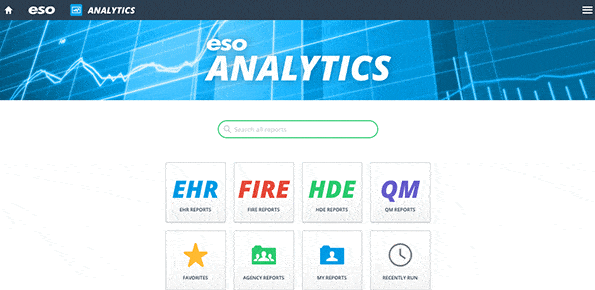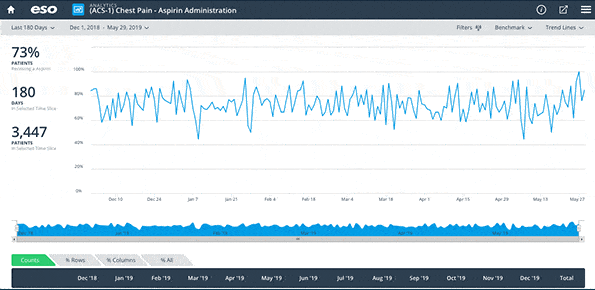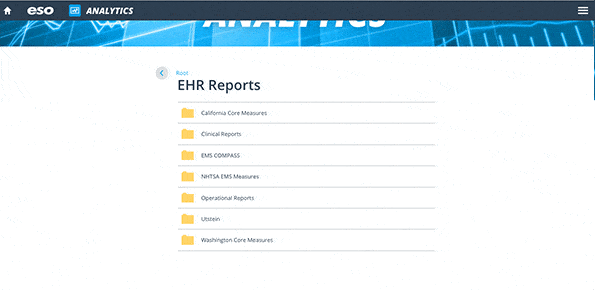ESO Analytics for QI
A quality improvement program is only successful when the related measures are informative, precise, and accessible. In fact, being able to measure the impact of change is so important that in the S.M.A.R.T. acronym, the “M” is for measurable.
That’s why ESO products like ESO Electronic Health Record, ESO Fire Incidents, and ESO Health Data Exchange have ESO Analytics built in. When your quality improvement program’s foundation is ESO Analytics, your team is empowered, and your efforts are effective.

Getting S.M.A.R.T. About Your Aim
A common and effective tool for generating an aim statement is the S.M.A.R.T. criteria, a simple acronym that helps ensure
Fill the form to Read the Full content
Keep Reading
teams are creating aims that will elicit real world results. An effective aim statement will be:
S (Specific): We want to ensure the aim is well-defined and of an appropriate scope.
M (Measurable): We want to be able to measure and monitor progress over time. How else will we know when a change is an improvement?
A (Attainable): We should be able to take action to overcome barriers to achieving results.
R (Relevant/Realistic): We want to ensure that goal is within our reach with our available resources and there’s no other significant project that will compete with the resources needed to achieve this goal.
T (Time-bound): We need to set a specific timeframe for accountability and target dates for action items.
Excerpted from “Take Aim to Create Meaningful Process Improvement”
Using ESO Analytics for Quality Improvement
1. Quickly begin to identify your baseline measure.
Prebuilt reports mean that with just a couple of mouse clicks, you can quickly get started with your baseline measures.
2. Customize your measures for precision.
Tweak a prebuilt report or start a highly customized report from scratch to hyper-focus on the specific result you are aiming to improve. With hundreds of variables, the only limitation to precision is your own imagination.
3. Feel confident about data collection.
ESO Electronic Health Record’s preset values and validation rules mean field personnel are entering patient data in reliable methods that result in high quality data for ESO Analytics reports.
4. Understand the impact on patient outcomes.
Merging EMS and hospital data by pairing ESO Analytics with ESO Health Data Exchange allows EMS leaders to incorporate holistic patient outcomes into quality improvement efforts.
5. Leverage benchmark performance data.
Using common core measures, such as EMS COMPASS, Washington Core Measures and California Core Measures, you can compare your performance against specific and relevant standards.
6. Save time with saved reports.
Create a report in ESO Analytics once and save it to reference forever, resulting in time savings and consistent apples-to-apples analysis.
7. Access your data from anywhere.
Since ESO Analytics is cloud-based, you can reference your improvement measures from the office, from a city council meeting, or anywhere else.
To learn more about using ESO Electronic Health Record and ESO Analytics at your agency, visit https://www.eso.com/ems/analytics-software/ or call 866-766-9471.



